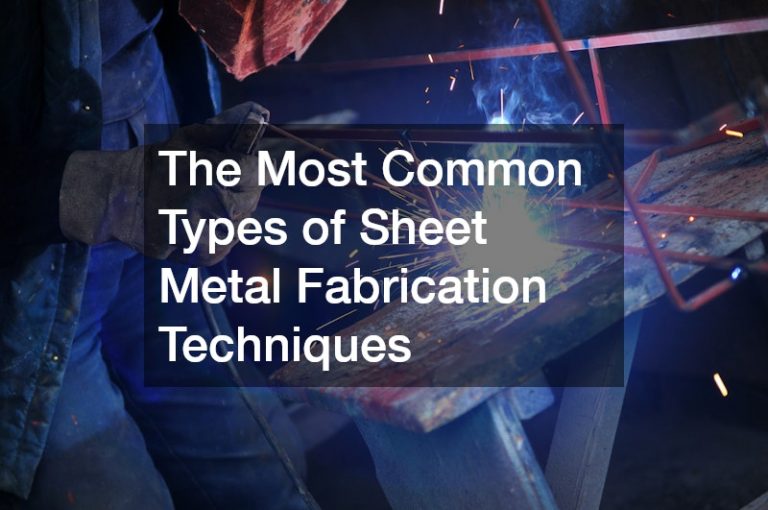Sheet metal fabrication is a versatile process used to transform flat metal sheets into functional parts and structures. Understanding the various techniques available is crucial for selecting the right method for your project. Here are some of the most common types of sheet metal fabrication techniques:
1. Cutting Techniques
Cutting is often the first step in sheet metal fabrication. It involves removing material from a larger sheet to achieve the desired size and shape.
Common cutting methods include:
- Shearing: This technique uses a shearing machine to cut metal sheets to size. It’s efficient for producing straight cuts and is ideal for creating large volumes of parts.
- Blanking and Punching: Blanking involves removing a section from the sheet to create a final part, while punching creates holes or shapes in the metal. Both processes are essential for producing parts with specific designs.
- Water Jet Cutting: This method uses high-pressure water mixed with abrasives to cut through metals. It offers precision and is suitable for intricate designs and various materials.
- Laser Cutting: Laser cutting employs a high-powered laser to achieve accurate and clean cuts. It is highly efficient and ideal for complex and precise shapes.
- Plasma Cutting: Plasma cutting utilizes a stream of ionized gas to cut through metals quickly. It is effective for thicker materials and large-scale cutting tasks.
2. Forming Techniques
Forming techniques shape metal without cutting it, creating various structural forms:
- Bending: This process adds angles or curves to metal sheets, turning flat pieces into dynamic shapes.
- Hemming: Hemming involves folding the edge of the sheet metal over itself, creating a double layer for added strength.
- Curling: Curling forms the edges of the sheet into a ring shape, useful for components like tubes and rings.
- Deep Drawing: This technique uses a punch to draw the metal into a die, creating deep, complex shapes.
3. Joining Techniques
- Welding: Welding joins metal pieces using heat and pressure. Common methods include TIG (Tungsten Inert Gas) and MIG (Metal Inert Gas) welding. Proper pre weld cleaning solution is crucial to ensure strong, clean welds by removing contaminants from the metal surface.
- Riveting: Riveting involves using mechanical fasteners to join metal parts permanently. It is often used in applications where welding is not feasible.
These techniques are essential for a wide range of applications in industries from automotive to aerospace. Selecting the appropriate method depends on the specific requirements of your project, including material type, shape, and final product use.
.




